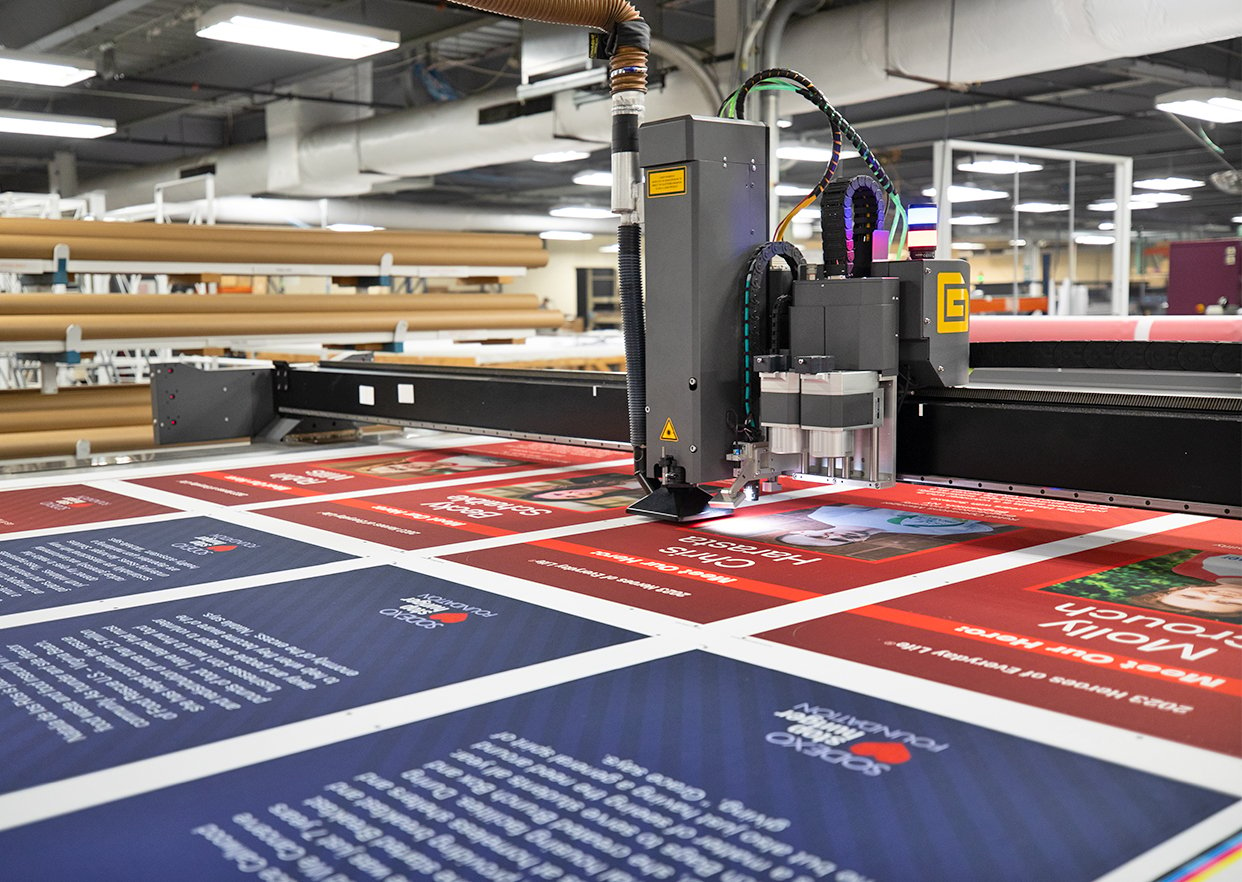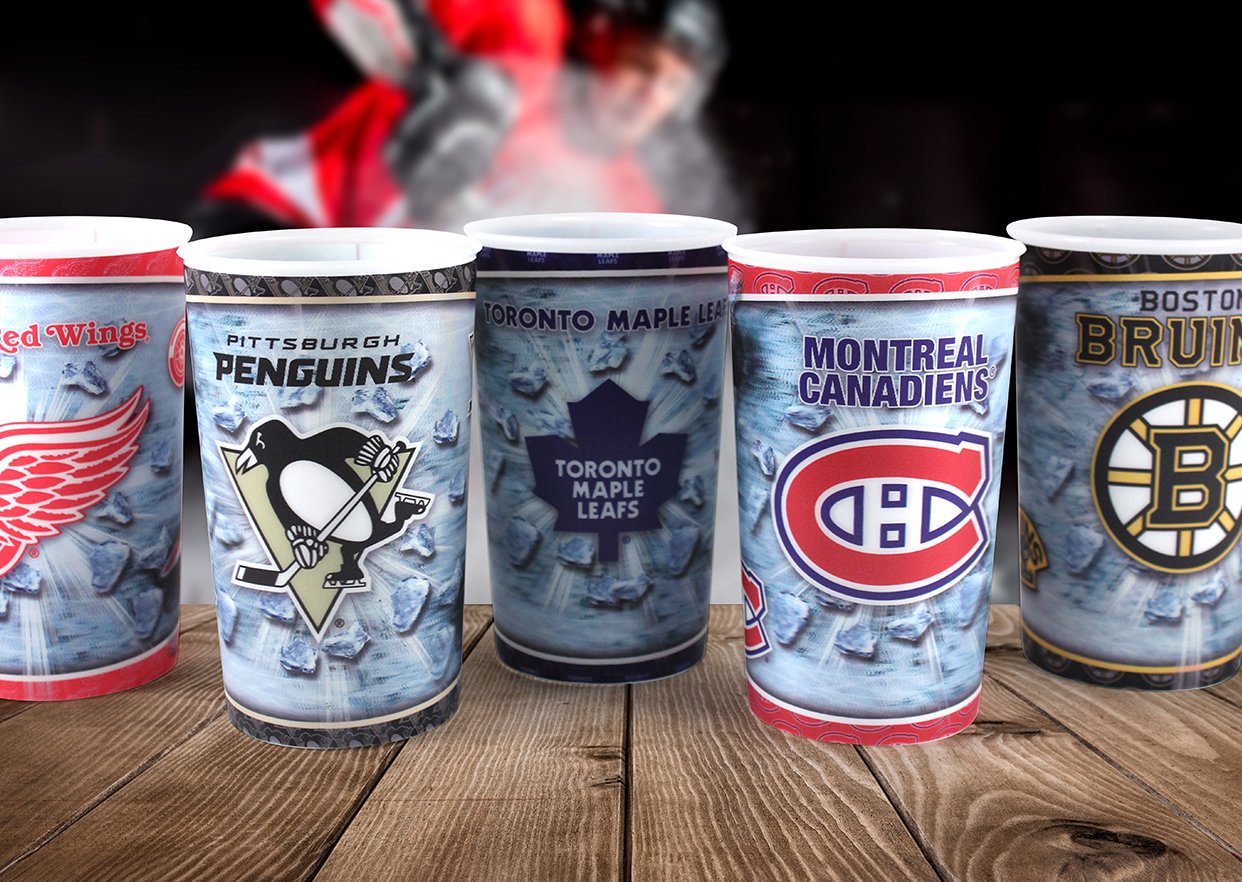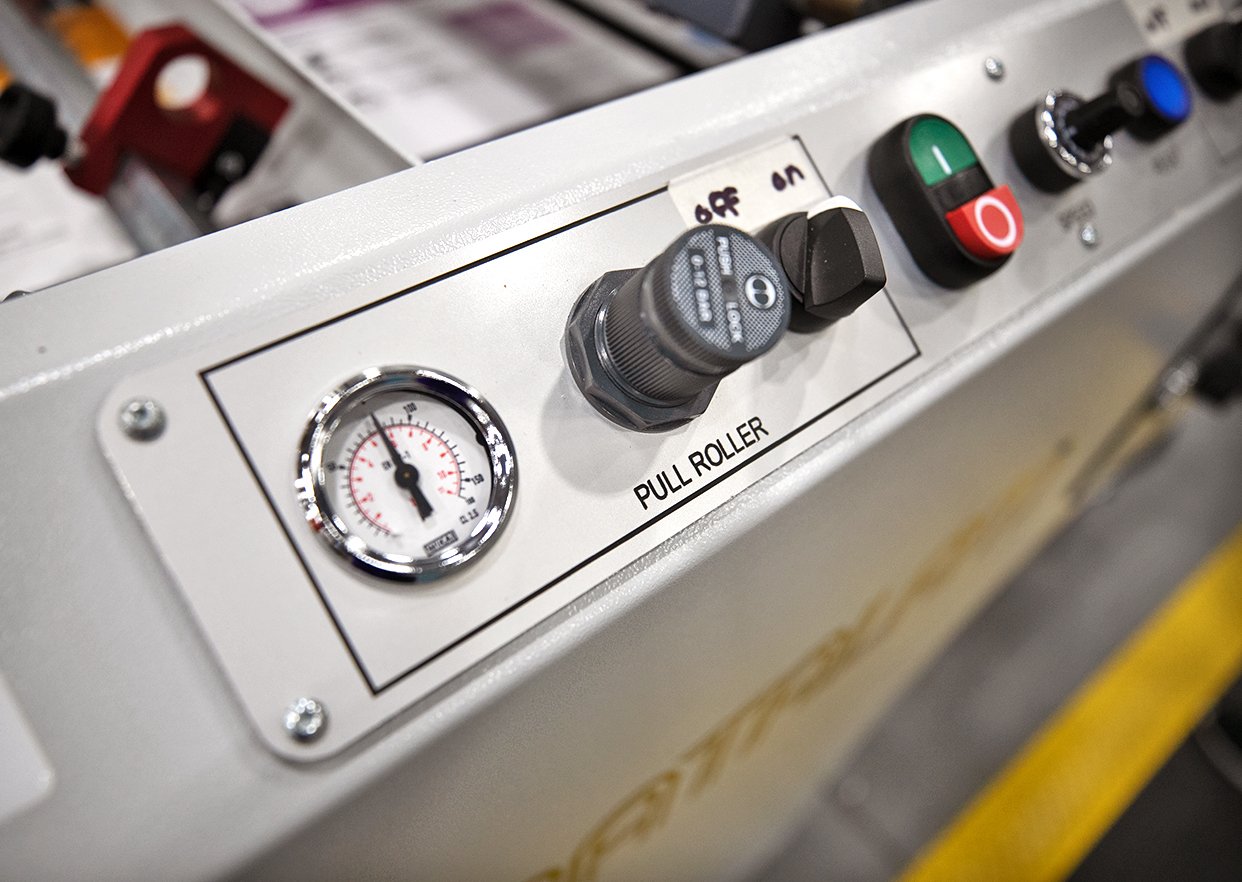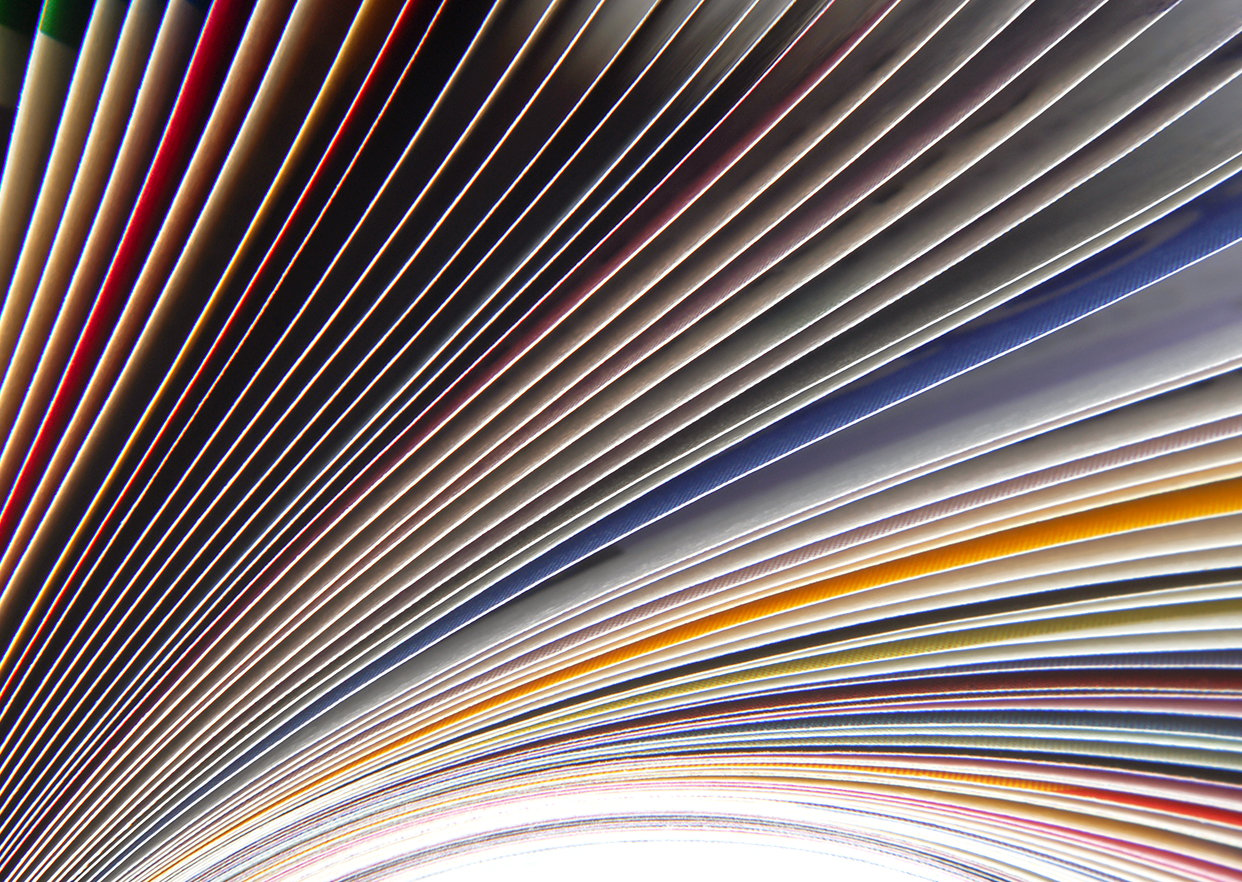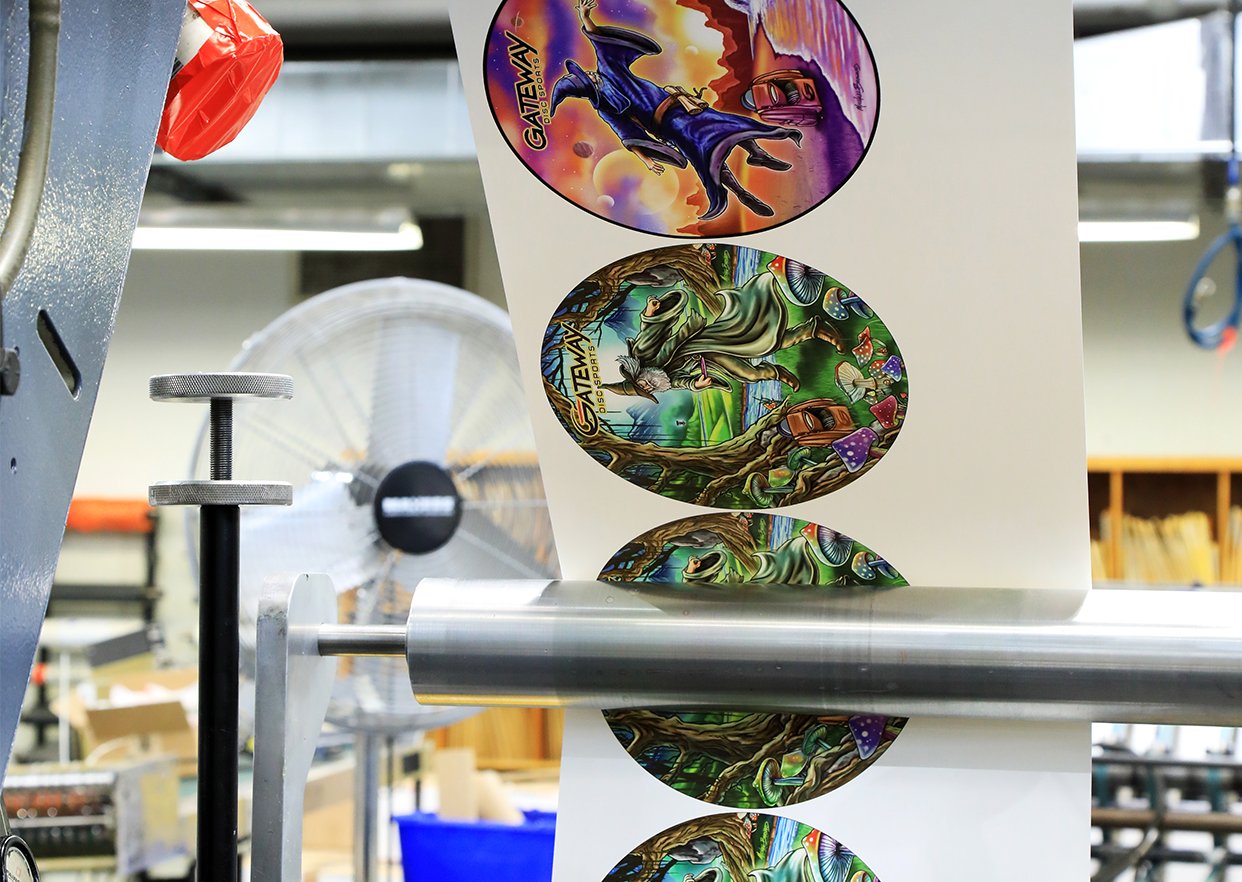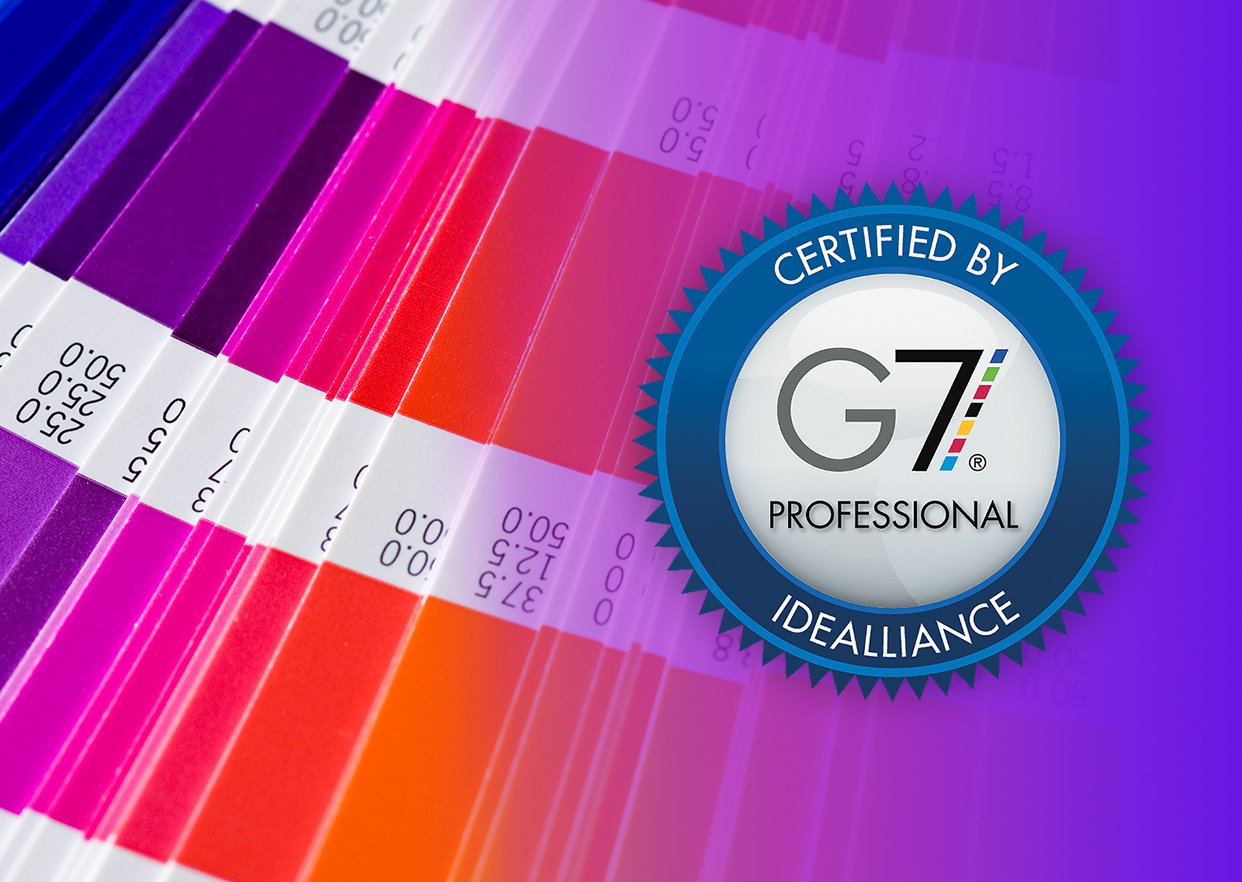This time, we touch briefly on the types of printing processes used in the printing industry. This will serve as helpful background information for the next blog in the series, which will focus on printing press technology.
.jpg?width=1455&height=626&name=Blog%20Body%20Image%20Collage%20%E2%80%93%20Print%20101%20Series%20(2).jpg)
Printing Processes Compared
Whether you're printing brochures, business cards, restaurant menus or something else, it’s helpful to understand the different types of printing processes that may be used. Spot color printing and full-color printing are two primary choices and each has its own advantages and limitations.
Spot color printing
Spot color printing, also known as solid color printing, uses pre-mixed ink in specific color shades. These pre-mixed colors are usually Pantone Matching System colors (PMS). However, iconic consumer brands sometimes use custom color mixes that don’t align to a given PMS color. Either way, spot color printing requires that each color be printed separately by the printing press using its own plate. This type of printing process enables the creation of consistent and accurate colors every time, making it ideal for printing logos and marketing materials that require specific colors to be reproduced accurately.
One advantage of spot color printing is that it can be done on a wide variety of substrate materials. This can include anything from paper, paperboard and plastic, to metal and more. Spot color printing is particularly useful when you want to keep your costs from spiraling out of control while trying to maintain tight control of colors across a variety of substrates.
However, the biggest disadvantage of spot color printing is a lack of flexibility. It’s generally not an economical printing process for designs that require multiple colors or shades like those found in photographs. In those situations, full-color printing is a better option.
Full-color printing
Full-color printing, also known as four-color printing or CMYK printing, uses four ink colors – cyan, magenta, yellow and black – to produce a full spectrum of colors. These four colors are applied in various combinations and densities to create the required shades and hues. Full-color printing is great when you want to produce high-quality, full-color images. The process allows complete flexibility over design and images, making it an ideal choice for printing photographs, illustrations and complex designs.
If your business relies heavily on printed materials like brochures and catalogues, you should definitely consider four-color process printing. This type of printing also produces gradients and subtle color changes much better than spot color printing.
However, one downside of full-color printing is that the cost per piece is typically higher than spot color printing, especially for smaller runs. It can also be more difficult to match exact colors as there are slight variations in color output from printer to printer. If your brand image hinges on accurate reproduction of a signature color, a spot color application may be necessary.
A Quick Note About Registration
No discussion of spot versus full-color printing is complete without mentioning the concept of registration. In simple terms, print registration refers to the precision with which an ink color is placed on paper in relation to the other ink colors. This, in turn, influences how accurately an image is rendered on the finished piece.
For a simple one-color printed piece, registration is a non-issue. However, as the number of ink colors increases, the need for precise registration soars. When using the four-color process, even a tiny variation in the registration of the cyan, magenta, yellow or black inks will cause the finished image to become blurred or muddy looking.
The TikTok brand logo offers a simple example of color registration gone wrong. Though a clever and intentional element of the TikTok logo design, it demonstrates how improper color registration can blur the underlying image.
The Best Commercial Printing Process
Both spot color printing and full-color printing have their own pros and cons. The choice of printing process ultimately depends on the objectives, design requirements and budget of your project.
- Spot color printing is ideal for designs that require consistent, accurate colors. This is especially true if you will be attempting to match a signature color on a variety of print substrates.
- Full-color printing is a better option for designs that require multiple colors, gradients and subtle color changes. It is generally more expensive but offers greater flexibility overall.
Printing Blog Series Continues
The next blog in our 4 P’s of Printing series will look at printing press technologies. Much has changed since the days of Johannes Gutenberg’s world-changing innovation of movable printing type. And yet, much of the underlying theory remains unchanged. Come back in a few weeks to learn more.
Taylor: G7® Color Certified
.jpg?width=1455&height=626&name=Blog%20Body%20Image%20%E2%80%93%20Print%20101%20Series%20(2).jpg)
Not all print providers are created equally. Taylor has invested heavily in print production technology as well as the talent needed to make the technology work.
G7 is the industry standard for color printing in North America and in most nations around the world. There are a handful of G7 Certified Trainers worldwide, most of whom work with print companies as hired consultants. However, Taylor is the only printing company to have its own G7 Certified Trainer on staff.
This in-house expertise with color reproduction has enabled us to credential more than 150 Taylor employees and partners as G7 Certified Professionals and Experts. Likewise, more than 30 of our print facilities are G7 Certified Master print facilities.
To learn more about Taylor’s sourcing expertise with printing processes and precise color reproduction, please contact one of our print experts.
